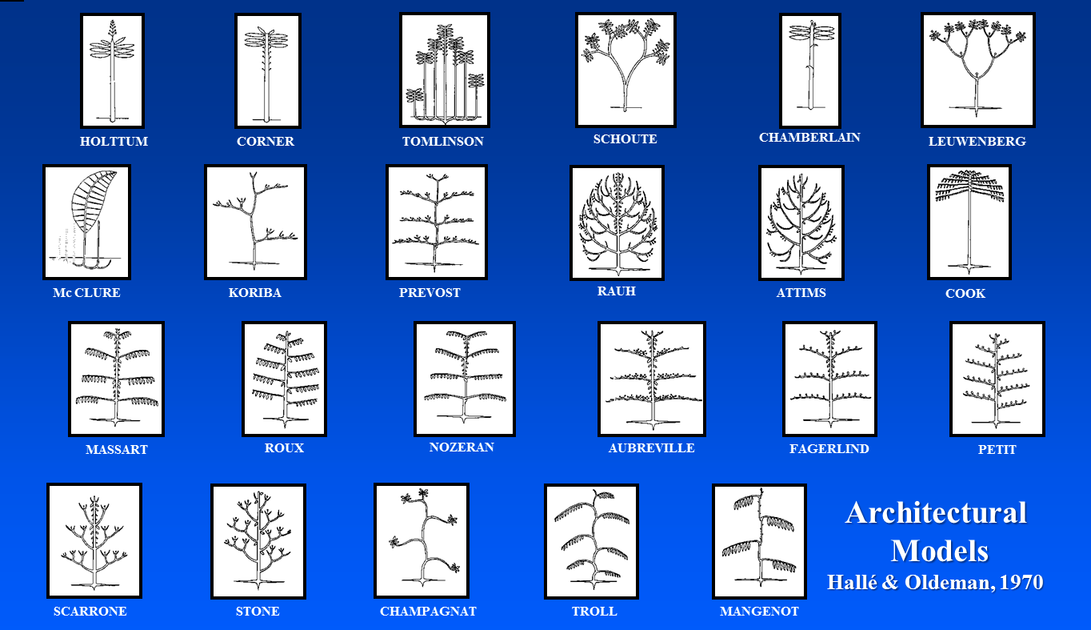Preliminary Course
Botany. Architectural Analysis
The Architectural Model.
Architectural models
-
The four major groups of simple morphological features presented until now (i.e. the growth pattern, the branching pattern, the morphological differentiation of axes and the sexuality position) can be combined to describe various growth strategies.
Each architectural model is defined by a particular combination of these simple morphological features on the main stem and main branches, and named after a well-known botanist.
Although the number of these combinations is theoretically very high, there are apparently only 23 architectural models found in nature. Each of these models applies equally to arborescent or herbaceous plants, from tropical or temperate regions, and which can belong to closely related or distant taxa.
Detailed information on each architectural model can be found in Hallé & Oldeman (1970) or Hallé et al. (1978)..

The 23 Architectural Models as defined by Hallé.
The architectural model is an inherent growth strategy that defines both the manner in which the plant elaborates its form and the resulting architecture. It expresses the nature and the sequence of activity of the endogenous morphogenetic processes of the organism, and corresponds to the fundamental growth programme on which the entire architecture is established.
Architectural model examples
-
The following figure shows two models differing according to their growth and branching pattern, rhythmic in one case, continuous in the second one.
They share mutually an orthotropic trunk and plagiotropic branches. Sexuality positions are also lateral in both cases, growth is thus indeterminate.

Massart and Roux Models (Photos D. Barthélémy)
The Massart Model shows indeterminate rhythmic growth and rhythmic branching
The Roux Model shows indeterminate continuous growth and continuous branching
Both the Massart and Roux models show an orthotropic stem and plagiotropic branches
Definition
Architectural Model
Botany. The architectural model is an inherent growth strategy that defines both the manner in which the plant elaborates its form and the resulting architecture (Barthélémy et Caraglio, 2007).See also: Architectural Unit.
Bibliography
Hallé, F., Oldemann, R.A.A. 1970. Essai sur l'architecture et la dynamique de croissance des arbres tropicaux. Paris: Masson.
Hallé, F., Oldemann, R.A.A., Tomlinson, P.B. 1978. Tropical trees and forests. Berlin: Springer-Verlag.
